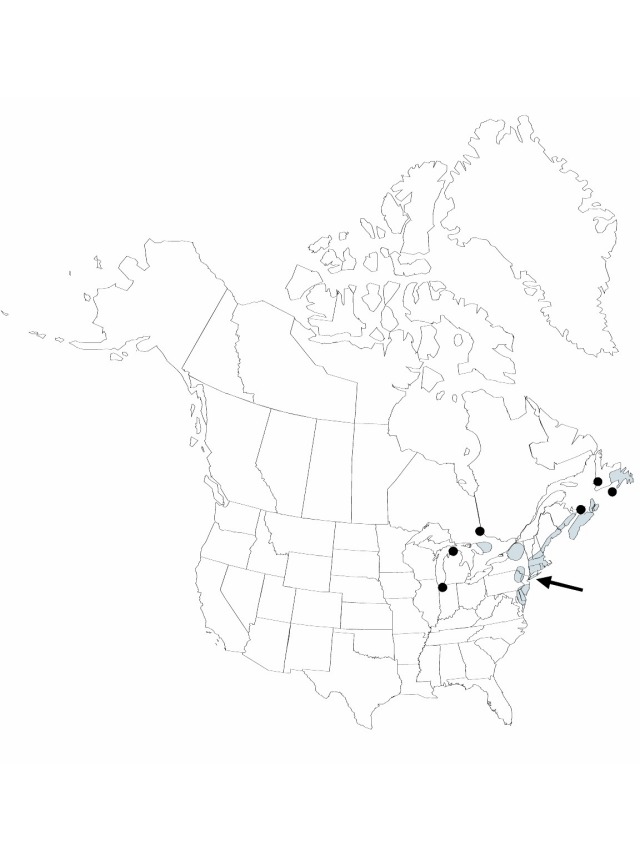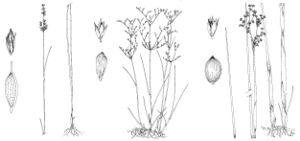Juncus militaris
Flora Bostoniensis, 2nd Ed. 139. 1824.
Herbs, perennial, rhizomatous, 3–15 dm. Rhizomes 3–4 diam., nodes not swollen, smooth. (often developing filiform leaves in running water). Culms erect, terete to compressed, 5–12 mm diam. Cataphylls 1–3, straw-colored to pink, apex acute. Leaves: basal 0, cauline 2, long capillary leaves often found in fascicles on rhizomes; auricles 0.3–0.5 mm, apex rounded, scarious; blade terete, 50–70(–100) cm × 2–5 mm, those of proximal leaves usually overtopping inflorescences, distal leaves usually inflated bladeless sheaths, occasionally absent or withll well-developed blades. Inflorescences terminal panicles of 20–100 heads, 4–15 cm, branches erect to ascending; primary bract erect; heads (3–)5–13(–25)-flowered, hemispheric to turbinate, 6–8 mm diam. Flowers: tepals straw-colored or reddish, lanceolate, 2.3–3.2(–4) mm, nearly equal, apex acuminate to awned; stamens 6, anthers 1.5–2 times filament length. Capsules straw-colored, 1-locular, ovoid, 2.3–3.3 mm, equaling perianth, tapering to subulate tip, valves separating at dehiscence. Seeds obovoid, 0.5–0.6 mm, not tailed; body clear yellow-brown.
Phenology: Fruiting late summer–fall.
Habitat: Mucky bottoms of shallow lakes and rivers, wet shores
Elevation: 0–500 m
Distribution

St. Pierre and Miquelon, N.B., Nfld. and Labr. (Nfld.), N.S., Ont., P.E.I., Conn., Del., Ind., Maine, Md., Mass., Mich., N.H., N.J., N.Y., Pa., R.I., Vt.
Discussion
The proximal culm leaf of Juncus militaris usually has a single well-developed leaf blade that overtops the inflorescence; and the distal leaf usually is an inflated bladeless sheath above it. An Alabama report, based on a single specimen collected by Drummond (not seen), at GH and MO, was discounted by Coville (and here). Coville believed the location and possibly the collector were wrongly attributed to this collection (see letter from Coville to Small at NY).
Selected References
None.
